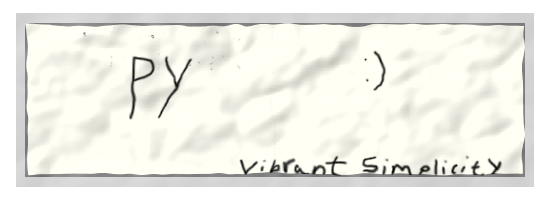Adventures in the Magical Land of Tiling Window Manestia
==========================================================As always, formatted in Markdown.So, I assume we're all used to the floating window paradigm (If you're not, upgrade to Windows 3.1 already!), and for those of us who use it often, we're also no doubt used to its drawbacks and limitations. Designed primarily to emulate the "real world" concept of being able to move and overlap physical objects, it certainly fills a useful hole as an obvious window management system.But I'm not going to sit here and tell you things you already know! I'm going to sit here and tell you why the window manager of tomorrow may not be the traditional FWM we're all used to, but rather, something different. In this case, Tiling Window Managers. Now, I'm not going to say that they solve all the problems FWMs have, nor that they're without problems of my own, but they do bring forward what I think will be the most important new dynamic of the window manager of tomorrow - automatic maintenance of window layout. Given today's extreme monitor sizes, the majority of applications simply do not require all of your screen - especially if that application is a web browser, and your monitor is widescreen, as fluid web layouts are nowhere near as prevalent as they should be.So why is my WM managing my windows for me a good thing? Well, primarily because it can do a good job of it, in a fraction of a second, wheras for me to organise multiple windows onto the same workspace without overlapping will take several seconds, but most importantly break my workflow. And, of course, switching focus to one of those applications is problematic - most FWMs use the concept of "z order" to switch through windows, which makes it very easy to switch between two tasks, but less easy to switch between half a dozen. This concept does have advantages - it's very hard to lose a window, for example. However, TWMs offer a different method - by ordering windows based on a stack and giving you methods to navigate and manipulate that stack. The upshot being that working with multiple windows becomse easy *when you know where they are*, and switching focus to another window becomes trivial. You could visualse the stack of a TWM as being like a large taskbar, except with the actual windows instead of icons.So why is this a better way? Well, now that it's 2011, and monitor sizes are becoming massive, automatically tiling windows in such a way that multiple windows are not just visible, but entirely usable, is now possible. We have more space, and can now use it far more efficiently. It's an old paradigm, but it's only really now becoming as useful as it could be.If you're interested in trying out TWMs, I can unreservedly recommend [Awesome](http://awesome.naquadah.org/) or [dwm](http://dwm.suckless.org/) for linux boxen, and halfheartedly recommend [bug.n](http://www.autohotkey.net/~joten/) for Windows.And, of course, as I've taken an interest in window management concepts, I've started my own project, [TWiME](https://github.com/Phoshi/TWiME), which is currently at ~early alpha stage, but is basically functional.(And while I have you, tagging windows is a *much* better virtual desktop design than most traditional designs (And yes, I stole the concept shamelessly))Adventures in the Magical Land of Tiling Window Manestia
Posted by PY on July 17, 2011, 2:22 p.m.

This blog is full of win.
If your reading this after thinking "Too long didn't read", Read it!Fuck you! I upgraded from Windows 2.0 to 2.1 two years before I was born, and I don't want to go through the hassle again!
I'll have to try out a TWM when I have more time. From the looks of it though, I don't think I'll be a fan. I have multiple monitors for this sort of thing, and while there are times I wish there was an easy way to organise my windows, I very rarely put more than two windows together on a monitor, and when that's the case, Windows7's snap feature makes that process pretty fast. It doesn't slow down my work flow too much, because of the win+[arrow key] shorcut.If I was working in a single monitor environment, I could see myself using this though.Yeah, Win7's snap feature is the same sort of idea, TWMs just take it a little further.
Certainly it's unlikely that tomorrow's WM will be a TWM - mouse support is a problematic concept, as well as the entire paradigm being designed around something directly opposed to catering to the lowest common denominator, but it wouldn't surprise me if it was an area MS or Apple looked to for designing future DEsAlso, I'd totally appreciate people testing TWiME! As far as I can tell, it's mostly stable, and it *shouldn't* flip out and lose all the windows on different tagspaces (but if it does I'm sorry).
I haven't updated the readme for mouse controls yet, but basically the jist of it is that LMB switches and RMB acts on the stack, whether that be pulling a window to the front or sending it to another tagspace's stack.